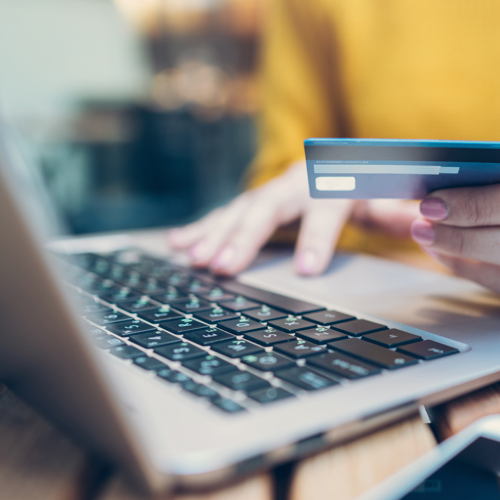
- Four minutes read
What does the future of payments look like for SMBs?
For SMBs, navigating the payments landscape can feel unduly treacherous. maintaining a balance between competing with larger businesses on consumer experience and having a financially feasible product
For SMBs, navigating the payments landscape can feel unduly treacherous. On the one hand, it’s imperative to keep abreast of the latest payment trends in order to compete with the likes of Amazon and other big names. On the other, it just isn’t practical — or financially feasible — to offer every payment method under the sun.
So how can they strike a balance?
At Paysafe, we think the answer lies in giving merchants more choices. And, through our recent acquisition of iPayment, we’re hoping to do just that: strengthen SMBs’ hand by providing a comprehensive suite of payment processing products that allows them to serve their customers better and, ultimately, gain a competitive edge.
Here’s a look at some of the key payment trends in North America and what these could mean for SMBs moving forward.
Future-proofing the in-store experience: The need for NFC capabilities
While cash remains surprisingly popular in North America, it’s clear that most customers don’t respond well to limited payment options. In fact, chances are that many would walk out the door if told they could only pay in cash.
It’s safe to say that consumers’ favorite cash replacement is contactless. In Canada, the value of contactless transactions hit CAD$67.1 billion in 2016. And our research found that 58% of Canadians prefer to shop in places that accept it even though they don’t always plan on using it.
More surprisingly, 61% of American consumers also prefer to shop at stores that accept contactless. This despite the fact that it has had a hard time taking off in the US. To put things in perspective, 80% of Canadian retailers were contactless-ready in 2016, but only 15% of US merchants were.
Given the appetite for the technology, NFC-enabled terminals are hardly optional for North American merchants. If anything, not being able to accept contactless risks alienating a growing chunk of consumers who value speed, convenience and the freedom to choose how they want to pay.
Contactless cards aside, NFC-enabled terminals also allow merchants to start accepting Apple Pay, Android Pay and other mobile wallets. While these haven’t yet reached critical mass, more people are getting comfortable with them. Upgrading to NFC-enabled terminals means merchants can future-proof their payment processing capabilities before the next wave of change comes along.
The online payments landscape
If digital wallets have yet to leave their mark in the physical world, the online landscape is a different story. Here, 42% of Canadians and 39% of Americans prefer to pay using a digital wallet.
A majority of consumers now prefer to shop online over going in-store, which means that merchants have to accept digital wallets in order to stay competitive. At the same time, online payments also offer savvy merchants an opportunity to stand out, boost sales and build brand loyalty by offering customers greater convenience.
Case in point, 'buy now, pay later' schemes are becoming increasingly popular for a number of reasons, including that they allow consumers to spread the cost of a purchase. From a merchant’s perspective, this option can also drive more revenue by encouraging larger purchases and return visits.
Similarly, real-time payments allow SMBs to cut transaction costs and improve their cash flow while making transactions faster and more transparent for consumers.
According to a recent survey, 65% of merchants are interested in accepting real-time payments — up from 59% in 2017. So, given that they seem poised for serious growth in the coming years, real-time payments are an option that’s well worth looking into.
The payment experience in an age of blurred lines
Of course, online shopping — and mobile shopping in particular — has had more far reaching implications for merchants than just changing the way consumers prefer to pay. The smartphone’s ubiquitous presence and our “always connected” culture have blurred the lines between the online and offline worlds.
In practical terms, this has meant that merchants have had to adapt — and continue to have to adapt — to increasingly non-linear behaviour. Consumers browse their smartphone as they scan the aisles. And the fact that they start a purchase online doesn’t necessarily mean they’ll also complete it online.
This is evidenced by the growing popularity of ordering ahead, an industry that BI Intelligence believes will be worth $38bn by 2020.
For many SMEs, order ahead could be a game-changer. Aside from the obvious convenience of allowing consumers to pick up their items without waiting around, it can also help merchants process more orders faster and boost their bottom line, as consumers who turn up for pick up tend to add more items to their cart.
The flip-side is that higher volumes may lead to scaling issues. Which is why partnering with a payment services provider with the right expertise can be crucial.
The push-pull of security vs convenience
In recent years, innovations that make the payment process almost invisible have come thick and fast: from payments that are taken automatically without the customer having to confirm payment, to checkout-free stores and smart re-ordering.
But, with all this focus on offering consumers faster, more convenient payments, it can be easy to overlook the elephant in the room. It’s tempting to jump on the bandwagon in an attempt to keep up with innovation, but our research suggests that consumers don’t want this to come at the expense of security.
Clearly, as important as it is for merchants to offer choice and convenience, there’s also a balance that needs to be struck. 2020 won’t belong to those who can take payment most efficiently, or process orders the quickest, but to those who can also win over consumers’ trust by taking on more of the security burden.




